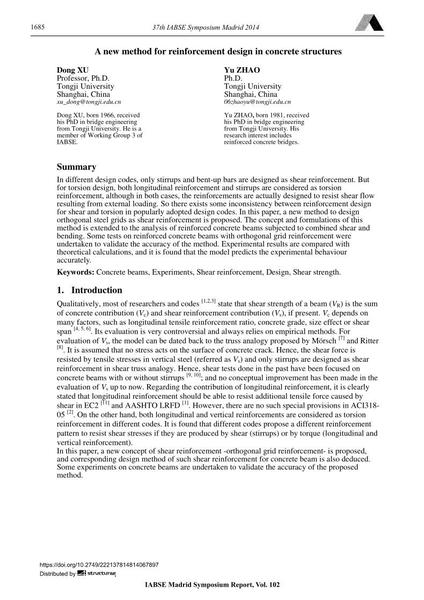A new method for reinforcement design in concrete structures

|
|
|||||||||||
Détails bibliographiques
| Auteur(s): |
Dong Xu
Yu Zhao |
||||
|---|---|---|---|---|---|
| Médium: | papier de conférence | ||||
| Langue(s): | anglais | ||||
| Conférence: | IABSE Symposium: Engineering for Progress, Nature and People, Madrid, Spain, 3-5 September 2014 | ||||
| Publié dans: | IABSE Symposium Madrid 2014 | ||||
|
|||||
| Page(s): | 1685-1690 | ||||
| Nombre total de pages (du PDF): | 6 | ||||
| Année: | 2014 | ||||
| DOI: | 10.2749/222137814814067897 | ||||
| Abstrait: |
In different design codes, only stirrups and bent-up bars are designed as shear reinforcement. But for torsion design, both longitudinal reinforcement and stirrups are considered as torsion reinforcement, although in both cases, the reinforcements are actually designed to resist shear flow resulting from external loading. So there exists some inconsistency between reinforcement design for shear and torsion in popularly adopted design codes. In this paper, a new method to design orthogonal steel grids as shear reinforcement is proposed. The concept and formulations of this method is extended to the analysis of reinforced concrete beams subjected to combined shear and bending. Some tests on reinforced concrete beams with orthogonal grid reinforcement were undertaken to validate the accuracy of the method. Experimental results are compared with theoretical calculations, and it is found that the model predicts the experimental behaviour accurately. |
||||
| Mots-clé: |
design
|
||||
